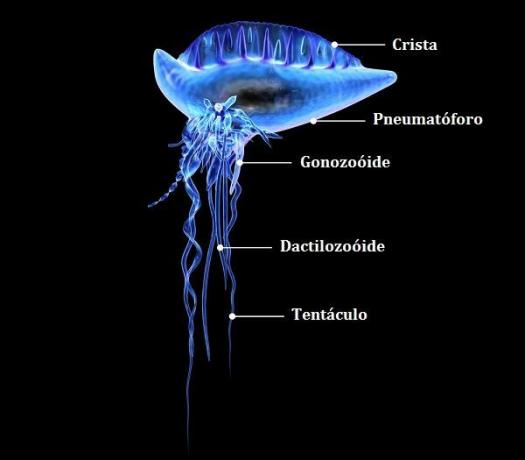Colonies are a type of harmonic ecological relationship between organisms of the same species, which are organized in such a way that they remain anatomically united. This relationship happens between simpler organisms such as protozoa, algae and cnidarians.
In the colonies individuals do not have such a complex organization as in societies and there may or may not be a division of labor between them, but they are anatomically linked.
In the societies like that of bees or termites, the ties between group members are strong, there are social organization and division of labor, however, individuals are not anatomically linked.
Colonies can be isomorphic or heteromorphic. Isomorphs are made up of similar individuals that live together. On the other hand, heteromorphs are composed of different individuals that have specific functions and are united in such a way that they seem to be a single being.
Colonies of Caravels
 Caravel Structure
Caravel Structure
the caravels are cnidarians and form colonies heteromorphic
. They are made up of several different individuals, each specializing in a role. They are connected to each other in such a way that they cannot live apart.In this way, the polyps responsible for the defense of the group are elongated and have tentacles with stinging cells, they are called dactyls. Those who take care of the food, gastrozooids, have mouth opening and a very rudimentary digestive system.
Those who specialize in producing gametes and participating in reproduction are the gonozoids. And there are still the pneumatophores which are air-filled and float, they do not move, are carried by the currents and carry everyone in the colony together.
Coral colonies
 Detail of a coral polyps
Detail of a coral polyps
Corals form colonies of the isomorphic. They are made up of thousands of small, similar individuals called polyps. Each polyp has a very simple body structure, consisting of a double layer of cells and an opening.
Polyps live housed in a limestone structure that they build. Some polyps can be larger and live independently. As they die, new polyps grow on top.


